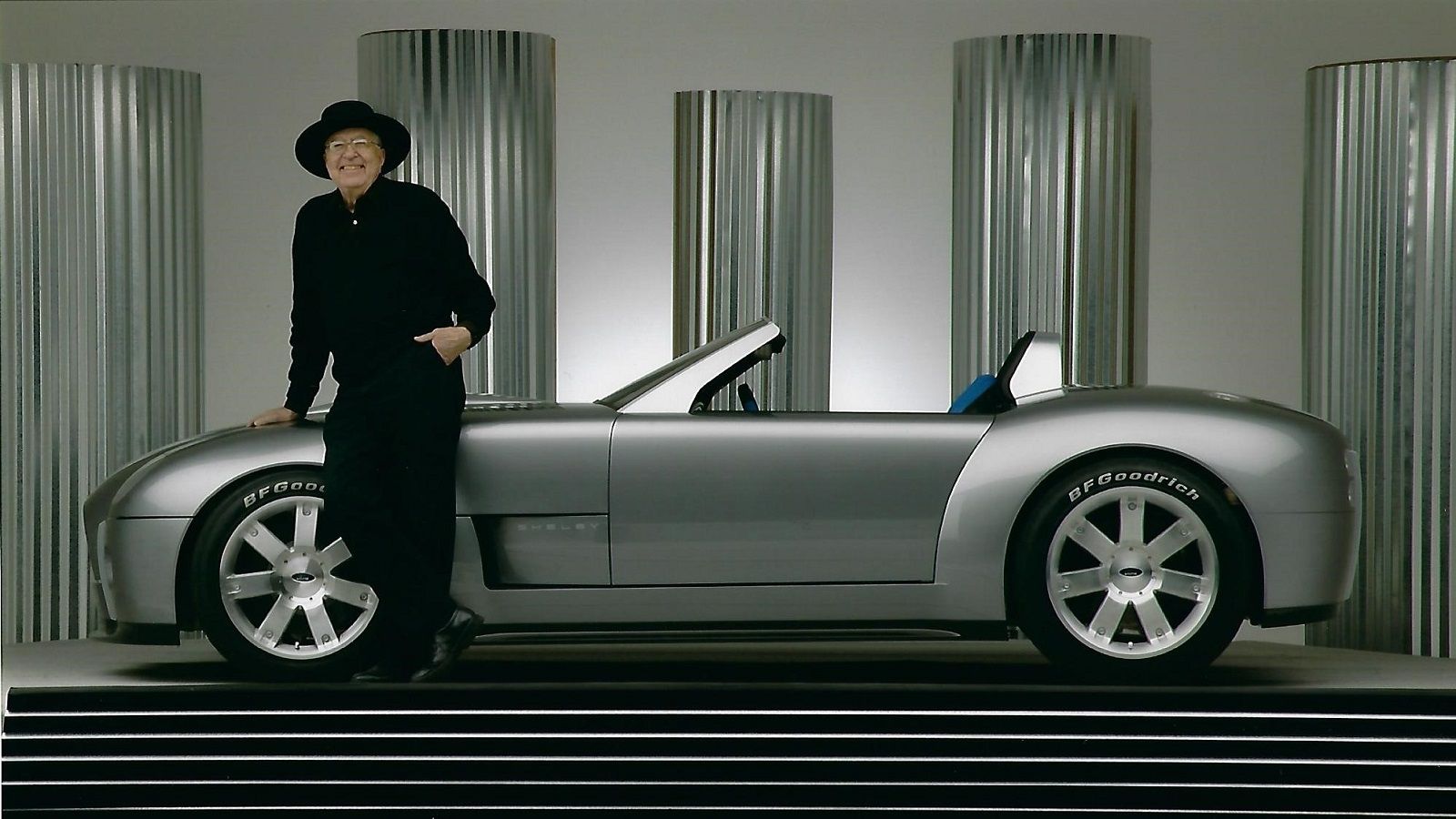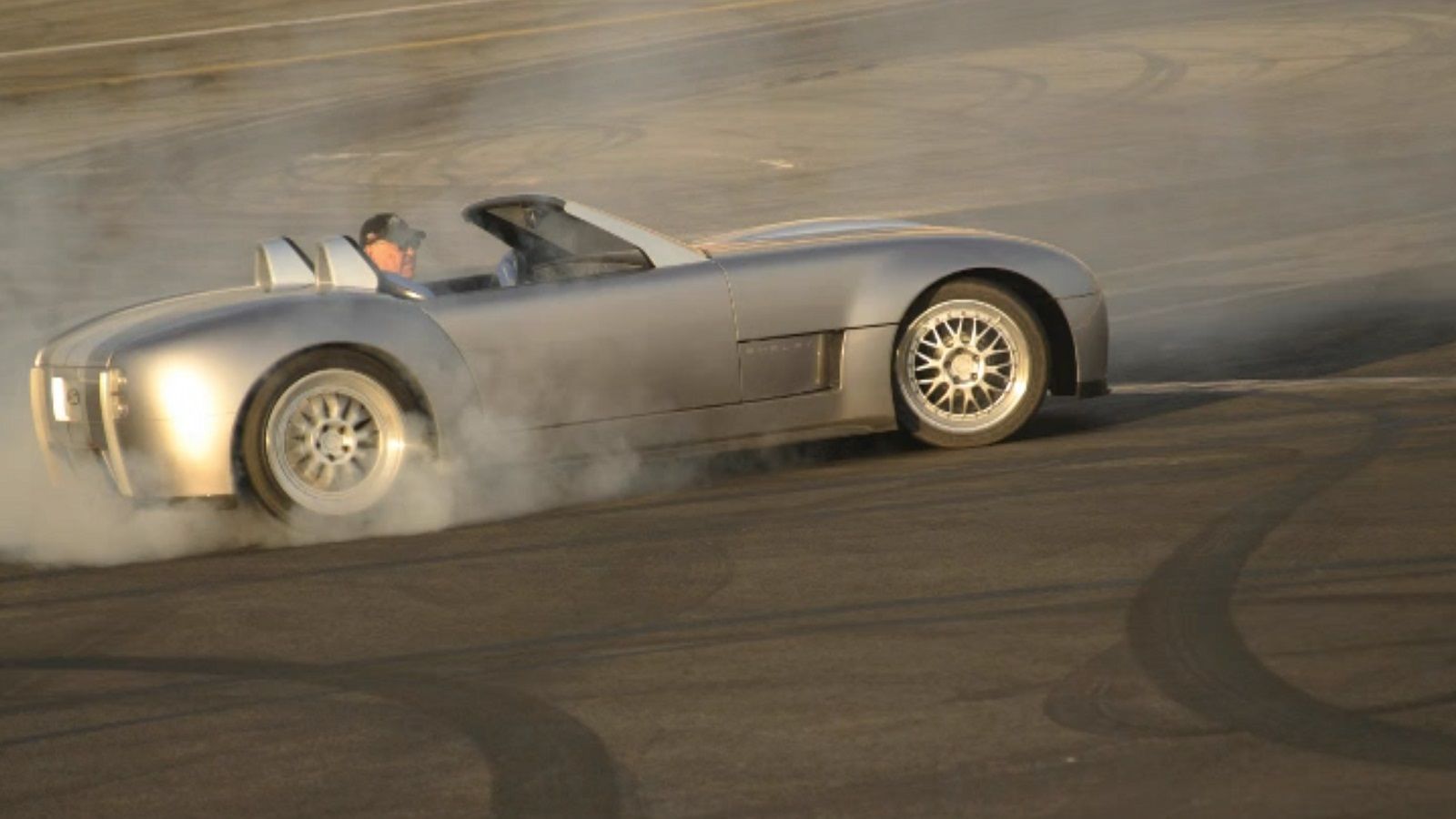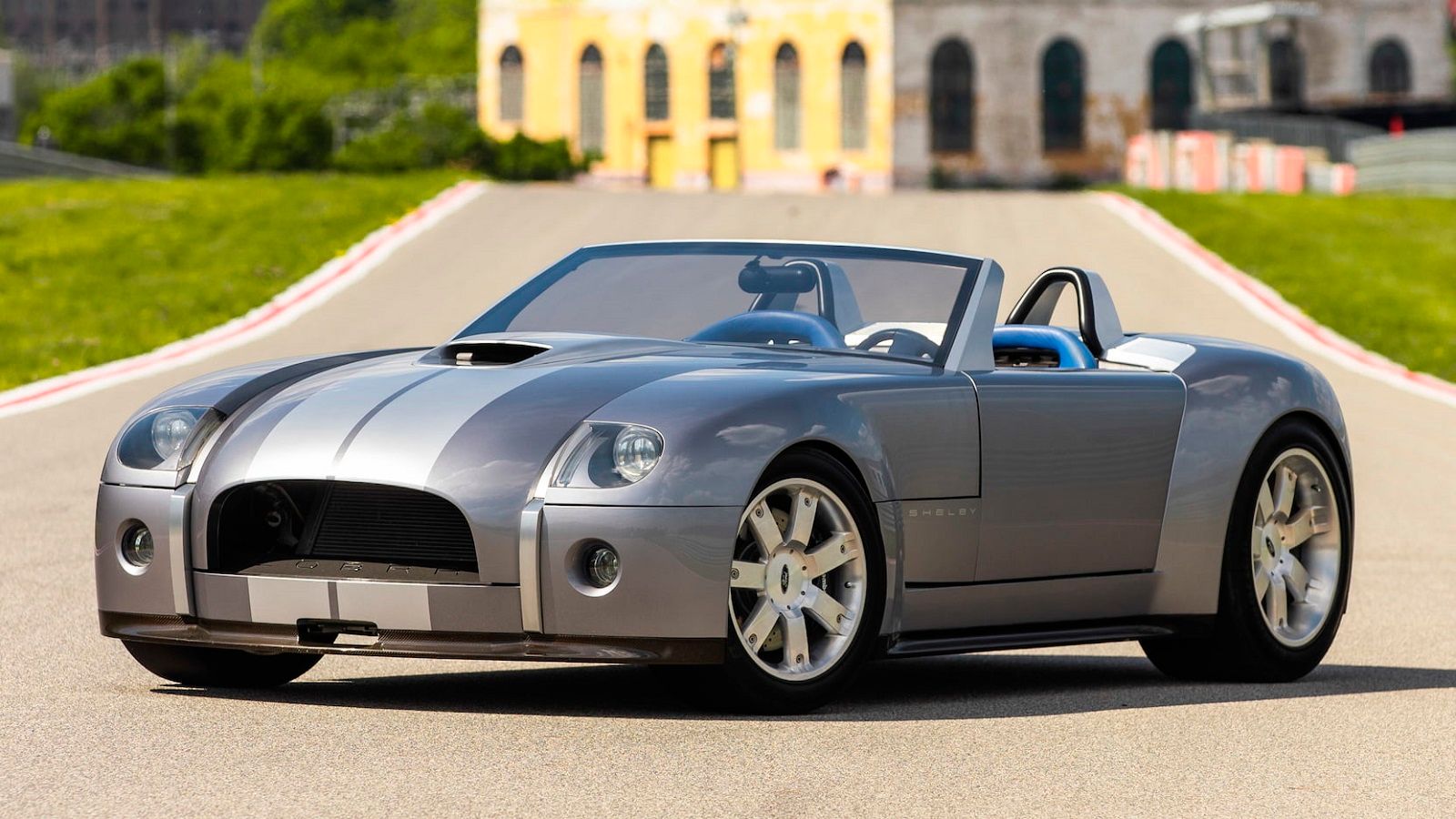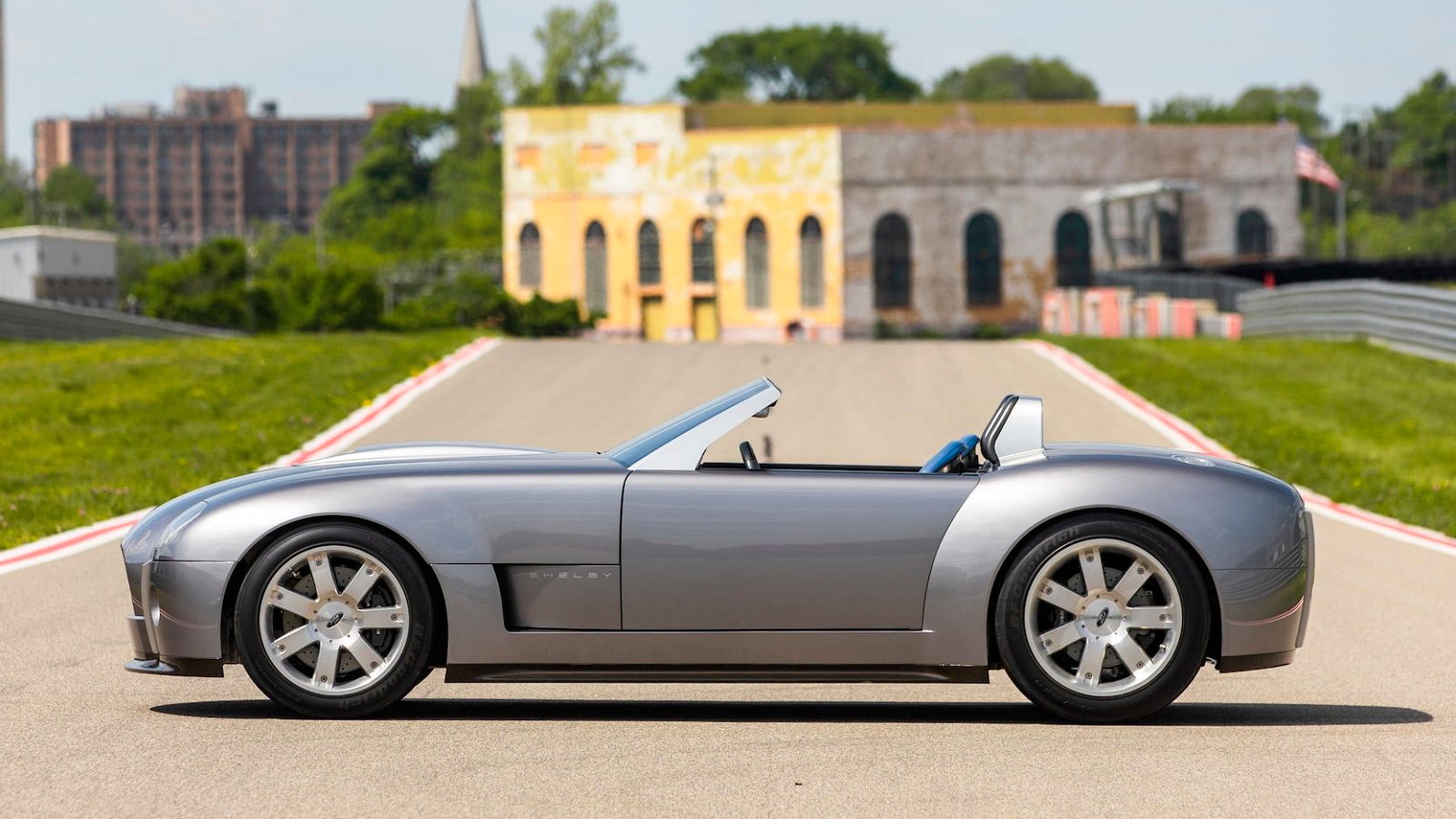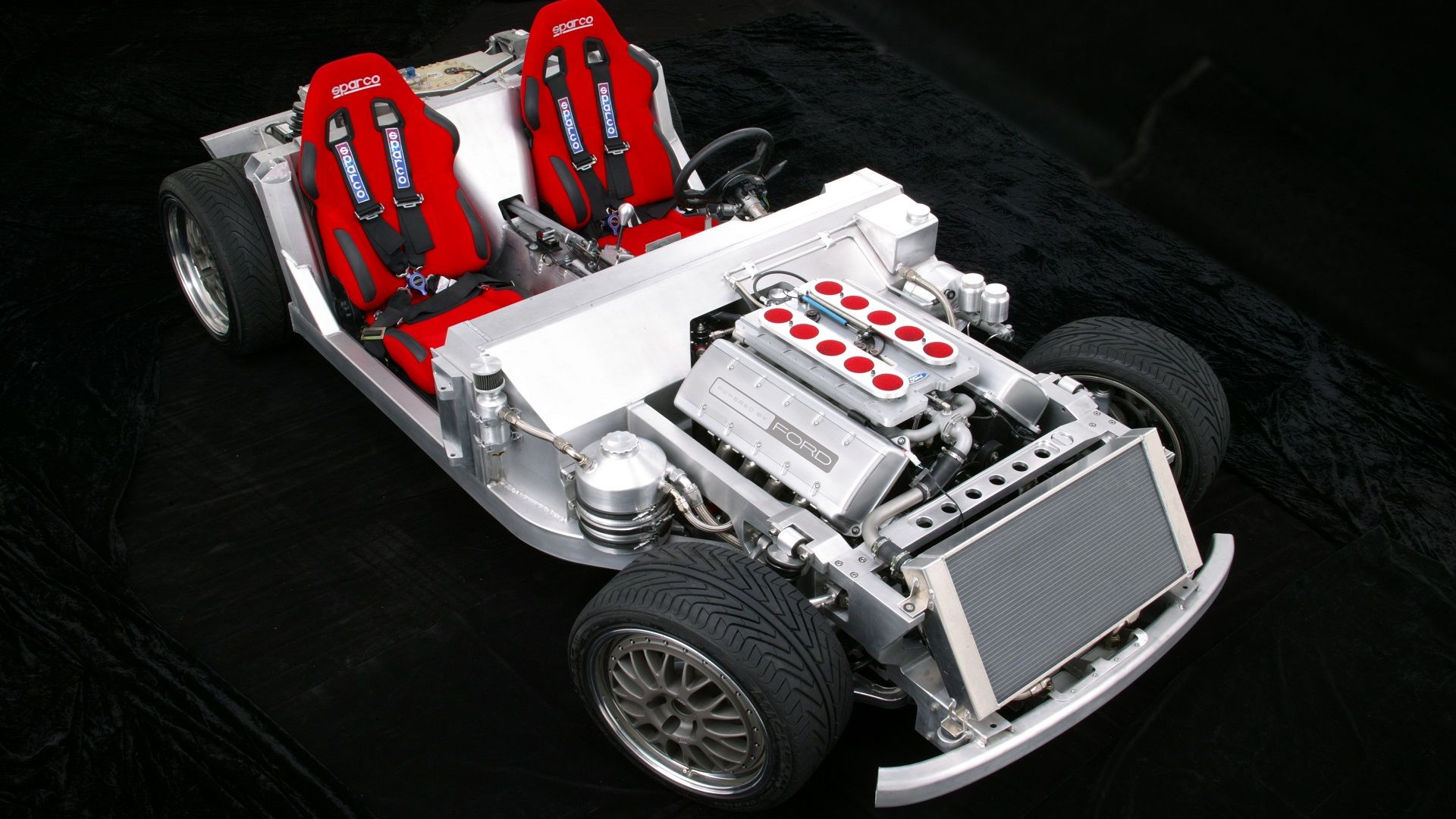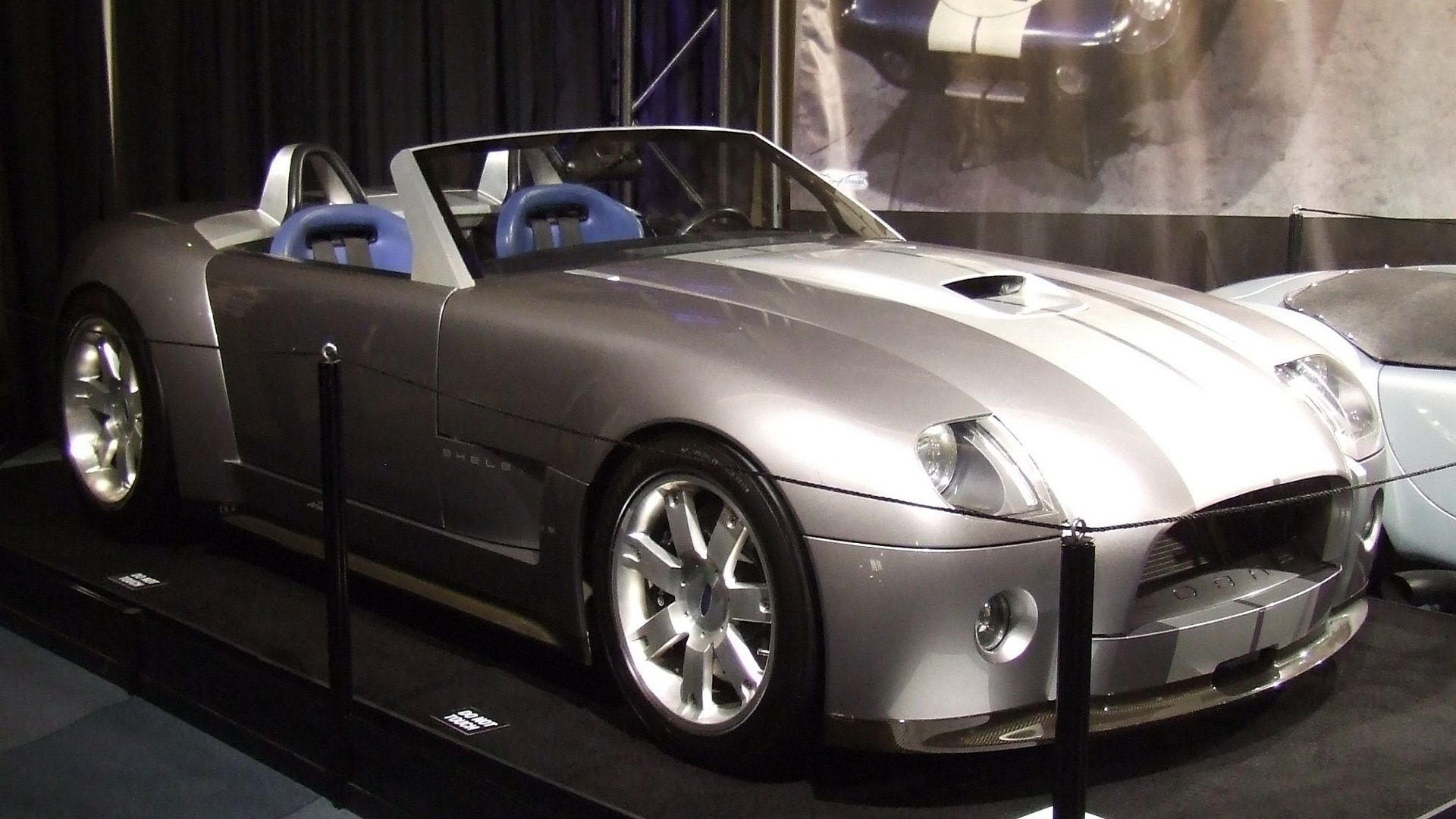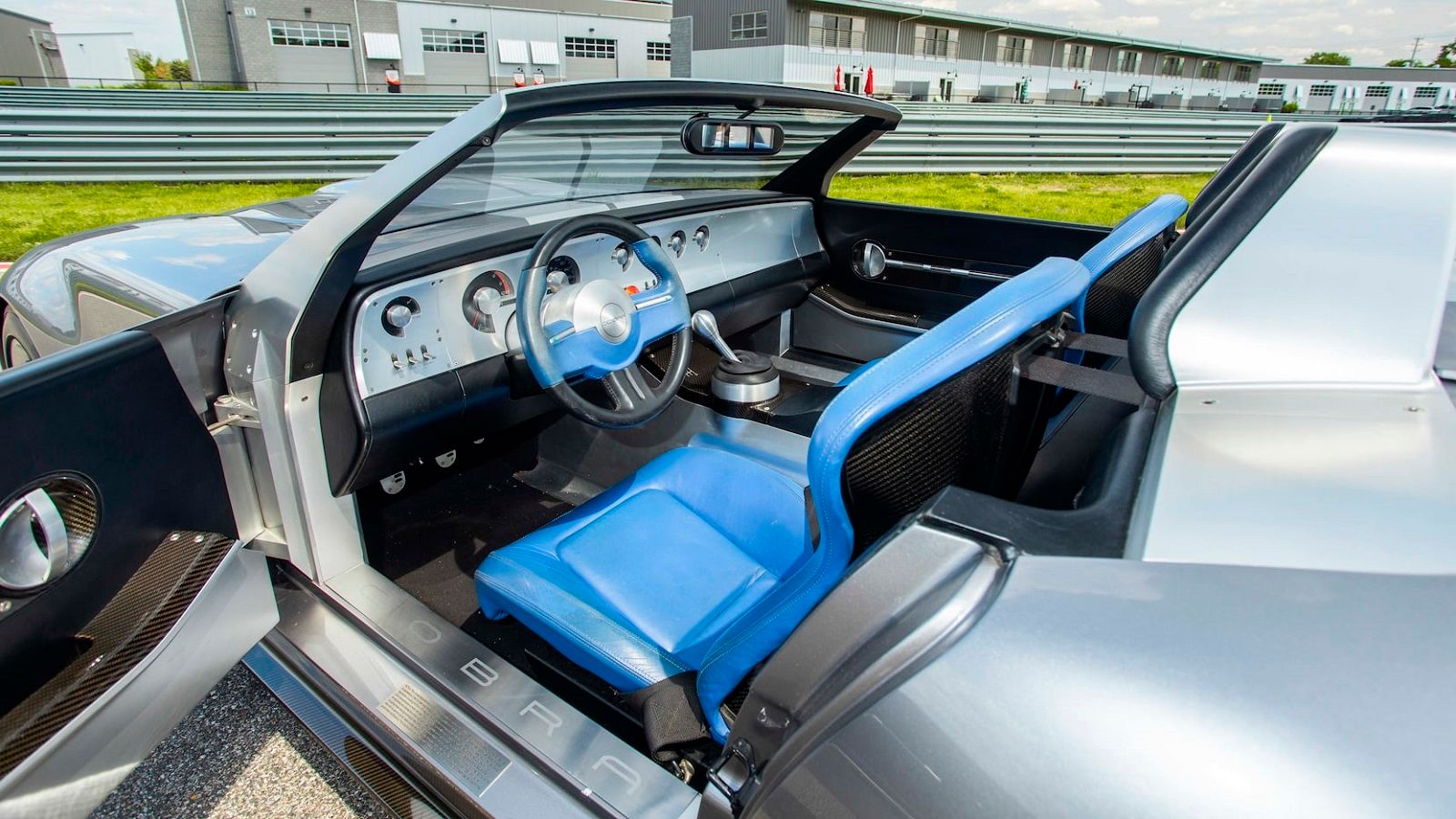The 2004 Shelby Cobra concept was a one-of-a-kind performance car that could have changed the industry
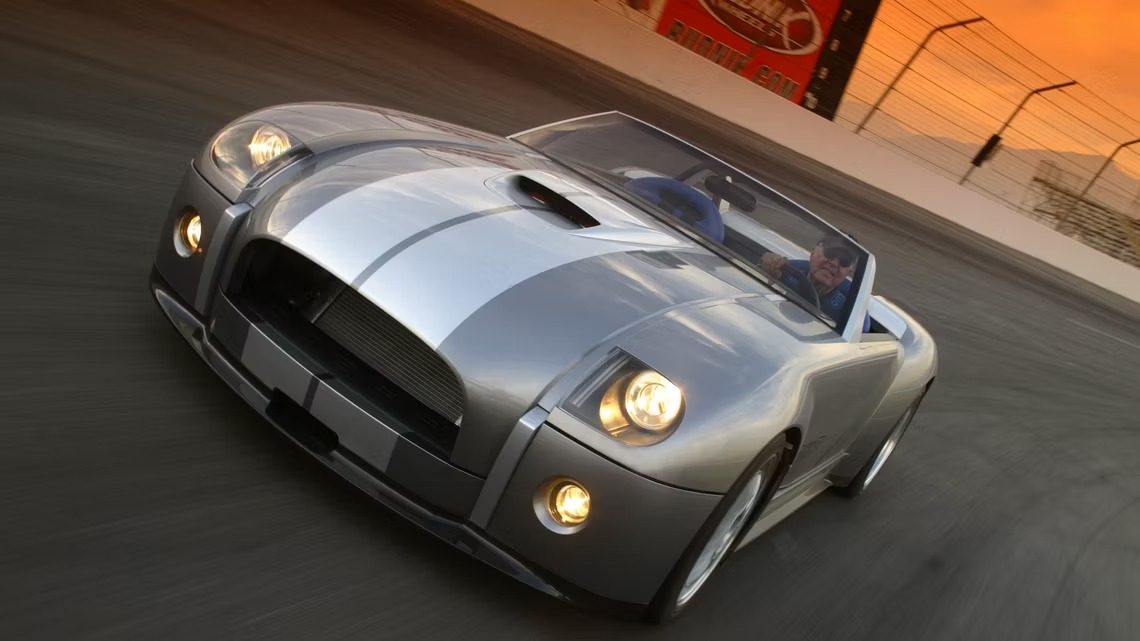
Front and partial side view of a 2004 Shelby Cobra Concept Car
The excitement that is surrounding the new AC Cobra GT Roadster has stirred up some mixed feelings from fans all over the nation. The design of the new Cobra GT is similar to those of the classic Shelby Cobras but with more modern technology and design features. Because of this new addition to the 2024 model lineup, the 2004 Shelby Cobra Concept car has been brought back into the limelight.
It was an awesome high-end performance car that could have made a huge difference in the Mustang lineup today, but since the Shelby Cobra idea never really got off the ground, it has been lost in history like so many other great classic muscle cars of the past. That is to say, until now.
The AC Cobra GT Roadster is a discussion for another time, so for now, let’s take a lcloser look at one of the most awe-inspiring concept cars made in the last couple of decades. It was a concept car that could have changed the future of the muscle car industry. Instead, it dangled what-could-have-been images and data in front of Shelby fans in a gut-wrenching way.
10 The 2004 Shelby Cobra Concept Was Not Designed By Carroll Shelby
Unlike the classic Shelby cars of the past, the 2004 Shelby Cobra concept car was not designed or built by anyone involved with the original car in 1962. It was molded after the design of the 1960 Cobra car, but it was created by a team of in-house Ford specialists dedicated to the project. This dedication let the team design and build the concept car in five short months. Carrol Shelby was a high-profile consultant throughout “Project Daisy,” giving advice and guidance when needed, but overall, Mr. Shelby was not a part of the team that designed the 2004 Shelby Cobra concept car.
9 2004 Shelby Cobra Concept Has A 605 Horsepower V-10
Carrol Shelby always had a philosophy that he followed when it came to adding an engine to one of his designs: If the engine seems too big for the car, then go bigger! He followed this for every design, starting with the original Shelby Cobra that had the massive 427 big block slid into place under the hood. The 2004 Shelby Cobra concept car went even bigger. The experts at Ford created an all-aluminum V-10 engine molded after the 427 of the ’60s, but with all the modern technology of the 2000s. The 6.4-liter engine could push out 605 horsepower and had a ground-pounding torque of 501 foot-pounds.
8 Top Speed Of 260 MPH, But The 2004 Shelby Cobra Concept Is Limited To 100 MPH
The 2004 Shelby Cobra concept car has changed hands now, but the one (and only one) built was initially created for high-speed testing. At the time, Ford wanted to compete more effectively with the Chevrolet Corvette and the Dodge Viper, so nothing was held back. The engine’s power was never truly measured because it was electronically limited to stop accelerating at 100 mph, but the people behind the scenes claim that this Shelby could have easily reached a top speed of 260 or so. Maybe too fast for the car and driver to handle, but the power was present in the freshly designed V-10.
7 No Turbocharger Or Supercharger Used, But Imagine If They Were On The 2004 Concept
Whether the team thought the V-10 engine was already big enough or there was no room for added specialty parts, the 2004 Shelby Cobra concept car was never tried out with a turbocharger or supercharger. Now, let’s imagine for a second what either of these additions could have done for the vehicle. The difference between a supercharger and a turbocharger is how they function, but in the end, they can both add up to 150 extra horsepower. To clarify, the turbocharger uses exhaust fumes to turn the turbine, while the supercharger is belt driven and hooked directly into the engine’s intake.
6 2004 Shelby Cobra Took After The Mighty Ford GT
To get a brand new concept car ready in five months, the team needed to use some of the components of an already existing production car. In this case, the Ford specialists took the ideas from the Ford GT. The rear-mounted six-speed transaxle was the same as the one used on the GT, as was most of the space-age frame and suspension. The Shelby Cobra concept car was molded after the Ford GT, but the platform needed for the styling required the structure to be modified, making it two feet shorter than the GT, with a wheelbase about seven inches smaller. This created a smaller car with a much bigger engine, following the original concepts of Carrol Shelby and his team.
5 Vented Disc Brakes Without Antilock System In The 2004 Shelby Cobra Concept
The 2004 Shelby Cobra concept car may have been rushed along too fast in some cases because the new technology was not carried over to every aspect of the vehicle. The brakes, for example were upgraded from the base level parts to vented disc brakes for steady stopping power. The front discs were 14 inches in diameter, and the rear was 13.2 inches, but no antilock braking system was used. The thought behind the design was claimed to have been to follow along with the original feel of the performance car, but it could have simply been because the team was rushed. It takes time to make everything work correctly together, which is something that the Cobra designers did not have.
4 The 2004 Shelby Cobra Concept Was Not Street Legal, At First
The idea of creating a concept car like no other was appealing to everyone involved with “Project Daisy,” especially since the tentative launch date for the production model was going to be the 2007 model year. That meant that the team had a few years to perfect everything in the car, so the concept car was designed more to impress than to be driven on the streets. That is why when the vehicle was auctioned off the first time, the new owner had to have the state of Montana issue a title for the 2004 Shelby Cobra based upon the Vin number that was stamped into place afterward (002003SHELBYCOBRA).
3 Ford Tried To Remove The Teeth From The 2004 Shelby Cobra Concept Car
After all the time and effort put into “Project Daisy,” Ford decided they did not want to move ahead with the project because of the money it would cost. The few years before 2004 were rough for the company, so the executives decided to kill the project before it proceeded to the production phase. The concept car was still out there, though, so they decided to remove the teeth from the 2004 Shelby Cobra concept car to keep it as a non-working concept. To do this, a team at Ford disconnected the output shaft that ran to the flywheel and welded the output splines, effectively disabling the car.
2 Ford Left It A Concept, Shelby Wanted More But Was Unable To Produce The Shelby Cobra Concept
Carrol Shelby and his team were not happy with the idea of leaving the crippled car as a concept, wanting to see it as a production car that could be bought and sold by the general public. Thankfully, Shelby was good at what he did and was able to reverse the damage that the team at Ford had done, making the 2004 Shelby Cobra concept car drivable once again. Carrol wanted to move forward with the project on his own, but when everything was said and done, his crew simply did not have the money needed to get the project off the ground again, so the idea was scrapped, leaving the final Shelby Cobra to ever be built as a one car wonder.
1 Value Of The 2004 Shelby Cobra Is Far Above The Last Auction Results
As can be imagined, any high-performance car with low production numbers will cost an arm and a leg to get ahold of. When talking about a Shelby Cobra that was only built one time, it can be expected to propel its value of it through the roof. As the future continues to unfold, the cost attached to the car will continue to rise, but for now, the car’s value can be seen by looking back at the last auction that Mecum had when it was listed. That was in August 2014, when it sold for $2.64 million, so add in the inflation and the increased cost for used cars it could be expected to pay up to $5 million if it went up for auction today.



